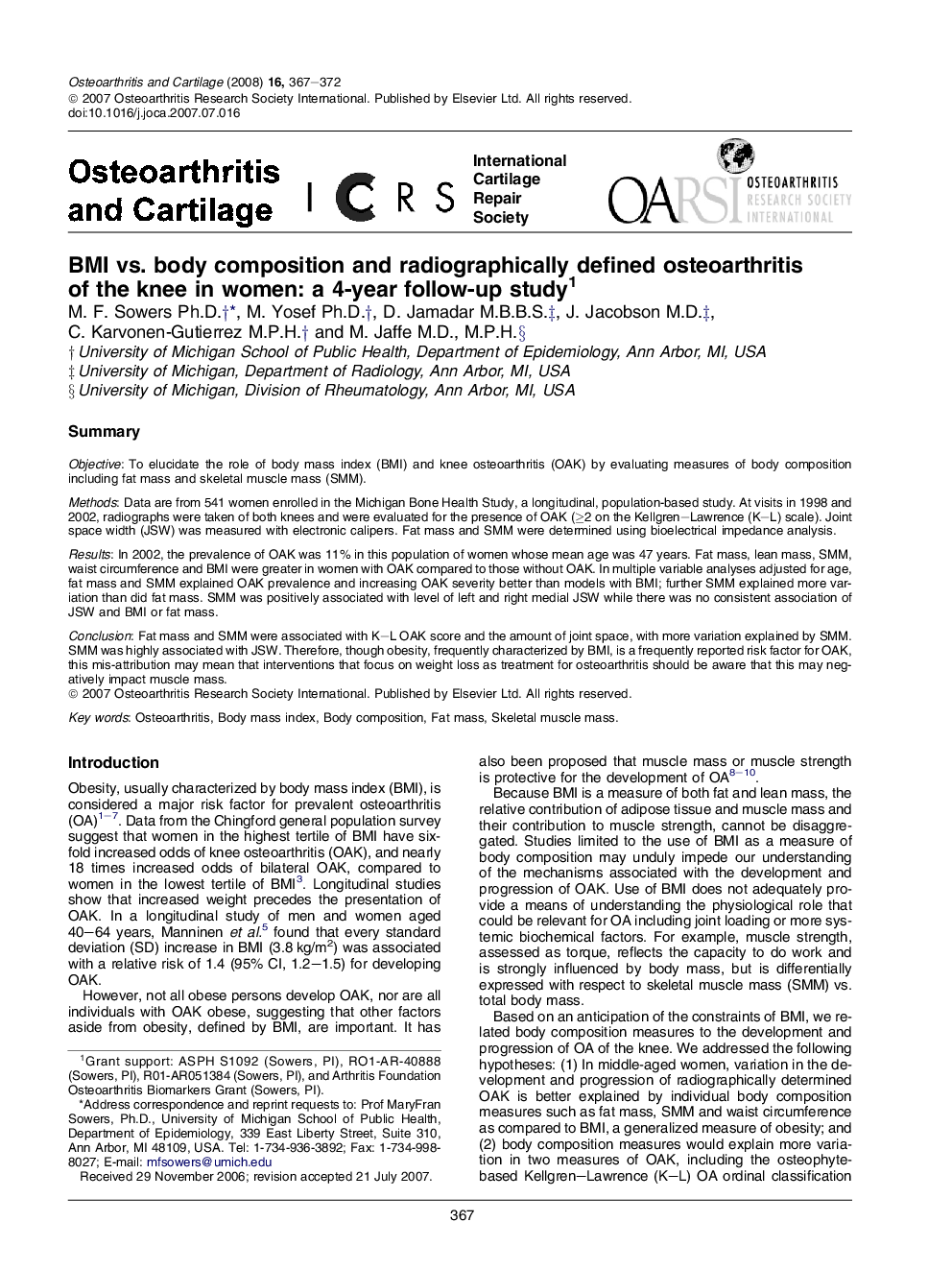| Article ID | Journal | Published Year | Pages | File Type |
|---|---|---|---|---|
| 3381154 | Osteoarthritis and Cartilage | 2008 | 6 Pages |
SummaryObjectiveTo elucidate the role of body mass index (BMI) and knee osteoarthritis (OAK) by evaluating measures of body composition including fat mass and skeletal muscle mass (SMM).MethodsData are from 541 women enrolled in the Michigan Bone Health Study, a longitudinal, population-based study. At visits in 1998 and 2002, radiographs were taken of both knees and were evaluated for the presence of OAK (≥2 on the Kellgren–Lawrence (K–L) scale). Joint space width (JSW) was measured with electronic calipers. Fat mass and SMM were determined using bioelectrical impedance analysis.ResultsIn 2002, the prevalence of OAK was 11% in this population of women whose mean age was 47 years. Fat mass, lean mass, SMM, waist circumference and BMI were greater in women with OAK compared to those without OAK. In multiple variable analyses adjusted for age, fat mass and SMM explained OAK prevalence and increasing OAK severity better than models with BMI; further SMM explained more variation than did fat mass. SMM was positively associated with level of left and right medial JSW while there was no consistent association of JSW and BMI or fat mass.ConclusionFat mass and SMM were associated with K–L OAK score and the amount of joint space, with more variation explained by SMM. SMM was highly associated with JSW. Therefore, though obesity, frequently characterized by BMI, is a frequently reported risk factor for OAK, this mis-attribution may mean that interventions that focus on weight loss as treatment for osteoarthritis should be aware that this may negatively impact muscle mass.
